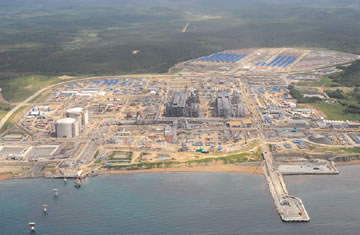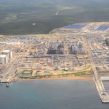
LNG – Russia’s New Energy Blackmail Tool
Publication: Eurasia Daily Monitor Volume: 6 Issue: 77
By:

Russian Prime Minister Vladimir Putin recently explained: "Russia enjoys vast energy and mineral resources which serve as a basis to develop its economy; as an instrument to implement domestic and foreign policy. The role of the country on international energy markets determines, in many ways, its geopolitical influence" (Ukrayinska Pravda, 4 Feb 2009). Putin was the architect of Russia’s use of energy as a foreign policy tool. He is now threatening to use Liquefied Natural Gas (LNG) as Russia’s new energy weapon. In essence, this will be utilized as a means of coercing the EU in order to achieve de facto recognition of a Russian "sphere of influence" within the former Soviet Union.
Putin began his LNG offensive in November 2008 by stating that if some EU member states continue to obstruct the Nord Stream gas pipeline project, Russia "will drop Nord Stream and build liquefaction plants and send the gas to other markets. We will sell it to you [Europeans], too. But it would be more expensive [in liquefied form]" (Kommersant, November 13, 2008). The threat was issued prior to the January 2009 Ukrainian-Russian gas conflict, during which gas supplies to Europe were shut down by Gazprom. Throughout the conflict Gazprom’s massive public relations machinery, along with Igor Sechin -a former intelligence officer suspected by many of orchestrating the downfall of the Yukos Oil Company- tried to undermine the credibility of Ukraine as an energy transit country. This strategy also aimed at convincing the EU that Russia’s Nord and South Stream projects were more viable, as they would by-pass Ukraine.
Putin’s November 2008 LNG threat was repeated on April 1, 2009 by Alexei Miller, the CEO of Gazprom: "We realize that with the growth of globalization of the Liquefied Natural Gas (LNG) market…and at a time when documents are being signed which ignore Russian interests, it is time to reevaluate our strategy towards LNG and the need to undertake new projects in this field" (Kommersant, April 2). The "documents" Miller was referring to was the recent EU-Ukrainian agreement to renovate the Ukrainian gas pipeline system -without Russian participation.
Miller’s threat to divert gas deliveries from the EU and send them in the form of LNG to Asian and U.S. markets was met with skepticism by energy experts. On April 2 Kommersant reported that Gazprom will not be able to carry out its threat in the near future. Russia has only one LNG liquefaction terminal in the Far East, the Sakhalin-2 terminal, whose entire output is already contracted for export by Japan and South Korea.
Furthermore, the threat to divert Russian LNG to the U.S. market is unrealistic at the moment -and for many years to come. New gas field discoveries in the U.S. have largely dispensed with the need to import LNG from foreign markets -including Russia. The Asian LNG market is currently looking towards Australia as a long-term reliable supplier and the Russian LNG production appears to be restricted to gas swap based deals with Algeria and Egypt.
Rising coal-seam gas production in Australia is on the verge of increasing Australia’s LNG exports from 20 million tons to 50 or 60 million tons within a decade, insuring a steady supply to Asian clients who are highly reliant on LNG for decades to come (www.business.smh.com.au, April 6).
A Russian LNG carrier fleet is slowly being assembled by SovComFlot whose CEO is Igor Shuvalov, one of Vladimir Putin’s closest advisors. The company, in partnership with Japan’s NYK Line, has four LNG carriers on order, two with Korea’s Daewoo and two with Japan’s Mitsubishi. In January 2007 SovComFlot took delivery of two LNG carriers built by Hyundai. A total of five LNG carriers are slated to handle LNG deliveries from Sakhalin-2. This is not a significant number considering that in 2007 more than 45 vessels were under construction to carry LNG from Qatar to world markets.
Standard and Poor noted in a June 2006 study of the Russian LNG business that a potential challenge to Russia’s future LNG industry could stem from the country’s domestic demand for gas. S&P observed that by invoking force majeure clauses, Russia could divert gas intended for export as LNG to local markets during peak usage periods. "Political risk, opaque legal and business systems and Russia’s short history of contract law and enforcement will distinguish its LNG projects from recent LNG project financing in Qatar, Oman and Trinidad and Tobago" the S&P report argued.
In this context, Putin’s threat to divert gas from the EU to feed other markets appears to be a bluff. He has not abandoned the Nord and South Stream pipelines and the second string of the Blue Stream pipeline to Turkey. However, it is becoming abundantly clear that the Kremlin is worried that its plethora of projected overland and undersea pipelines represents a risky and expensive gamble in its attempt to restore influence over the former Soviet republics.




